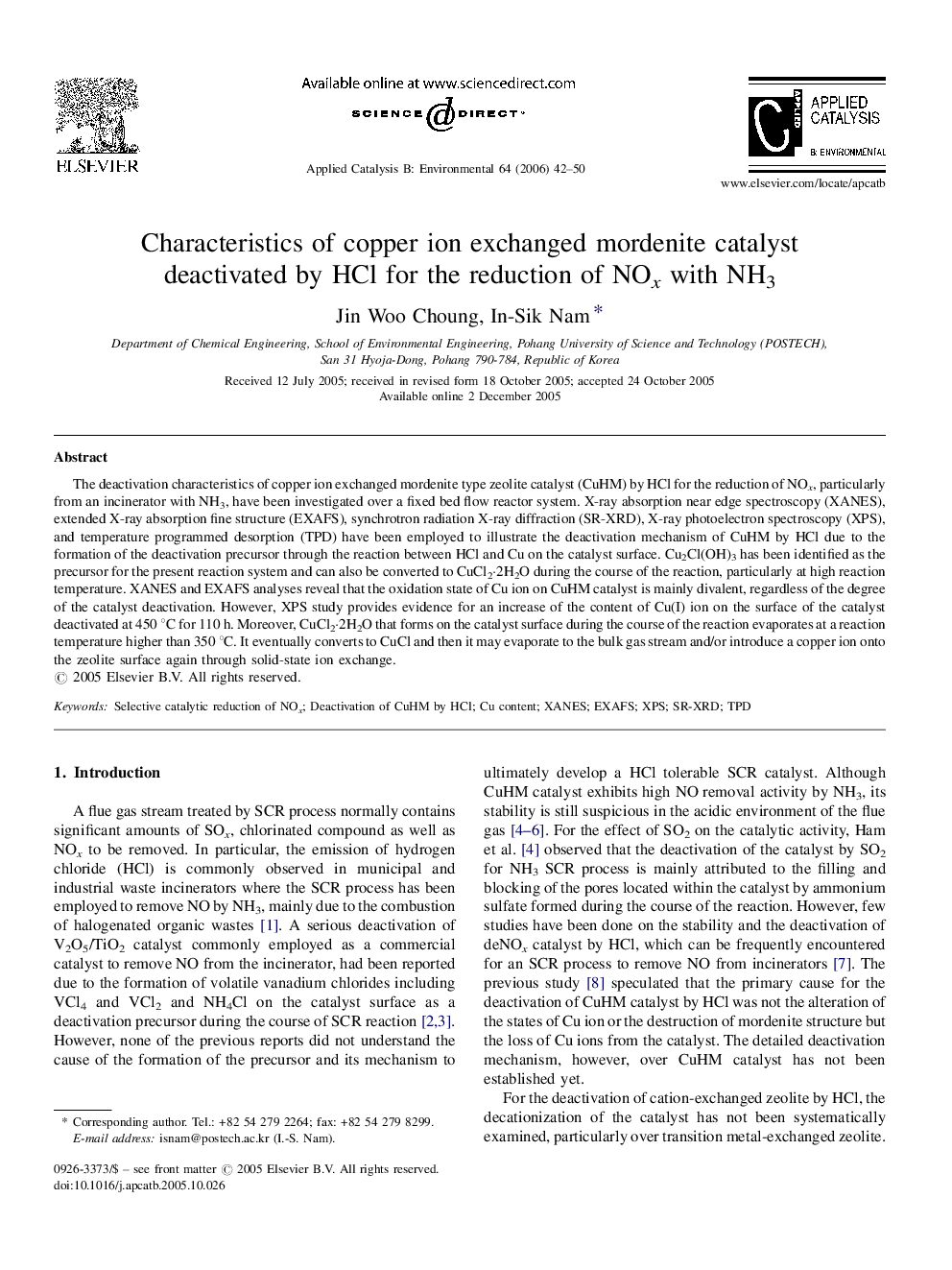| Article ID | Journal | Published Year | Pages | File Type |
|---|---|---|---|---|
| 48663 | Applied Catalysis B: Environmental | 2006 | 9 Pages |
The deactivation characteristics of copper ion exchanged mordenite type zeolite catalyst (CuHM) by HCl for the reduction of NOx, particularly from an incinerator with NH3, have been investigated over a fixed bed flow reactor system. X-ray absorption near edge spectroscopy (XANES), extended X-ray absorption fine structure (EXAFS), synchrotron radiation X-ray diffraction (SR-XRD), X-ray photoelectron spectroscopy (XPS), and temperature programmed desorption (TPD) have been employed to illustrate the deactivation mechanism of CuHM by HCl due to the formation of the deactivation precursor through the reaction between HCl and Cu on the catalyst surface. Cu2Cl(OH)3 has been identified as the precursor for the present reaction system and can also be converted to CuCl2·2H2O during the course of the reaction, particularly at high reaction temperature. XANES and EXAFS analyses reveal that the oxidation state of Cu ion on CuHM catalyst is mainly divalent, regardless of the degree of the catalyst deactivation. However, XPS study provides evidence for an increase of the content of Cu(I) ion on the surface of the catalyst deactivated at 450 °C for 110 h. Moreover, CuCl2·2H2O that forms on the catalyst surface during the course of the reaction evaporates at a reaction temperature higher than 350 °C. It eventually converts to CuCl and then it may evaporate to the bulk gas stream and/or introduce a copper ion onto the zeolite surface again through solid-state ion exchange.
